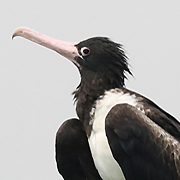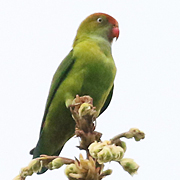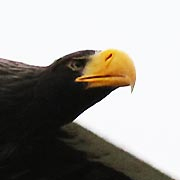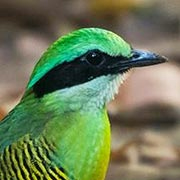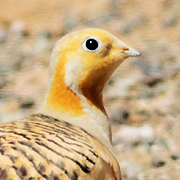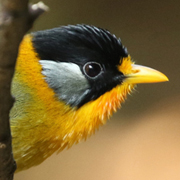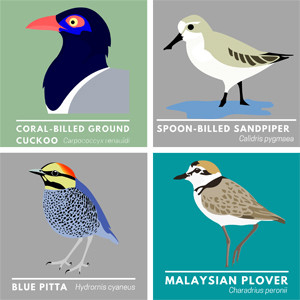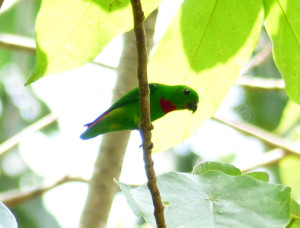
Last week I made two short visits to Thalebun national park in Satun province. This national park does not seem to receive visits by many bird watchers, probably because it is a long journey for many people and a lack of information. These facts coupled with the difficulty of accessing good habitat and that many people will think that Satun is one of Thailand’s southern provinces mean that there is little recent information on the birds to be found at Thalebun.
My short visits provided me with sightings of some good birds including Blue-crowned Hanging Parrot, Malayan Banded Pitta, Grey-and-buff Woodpecker, Banded Woodpecker and Green-backed Flycatcher with plenty of other commoner birds to make for some interesting birding.
The main problem at Thalebun is accessing the forest. At headquarters there is only one short trail so I was restricted to walking around the service roads. However, the forest can also accessed at Ya Roi waterfall and Wang Pra, although I was not able to visit the latter because it requires a 10km drive along a rutted dirt road. A range told me that there used to be a lot more birds at HQ in the past but corruption leading to disturbance and deforestation means that one must go deeper into the forest to find the best birds; in particular he told me that he hardly ever sees hornbills at HQ any more whereas they used to be frequent.
Around HQ I also saw a number of other species that I think of as “southern birds” including Green Iora, Lesser Cuckooshrike, Whiskered Treeswift, Grey-rumped Treeswift, Chestnut-breasted Malkoha, Lesser Green Leafbird, Red-throated Barbet, Spectacled Bulbul, Red-eyed Bulbul, Grey-cheeked Bulbul, Hairy-backed Bulbul, Grey-headed Babbler, Black-capped Babbler, Olive-winged Bulbul, Streaked Bulbul, Yellow-eared Spiderhunter, Yellow-breasted Flowerpecker and Crimson-breasted Flowerpecker.
Although most of these species are common, the ranger I spoke to told me that better birding was to be had at Wang Pra where Great Argus, Giant Pitta, Rail Babbler, Diard”s Trogon and several species of hornbill have been seen. Perhaps this national park is worthy of more frequent visits by bird watchers?


 April 21st, 2014
April 21st, 2014  Nick
Nick  Posted in
Posted in  Tags:
Tags: 
